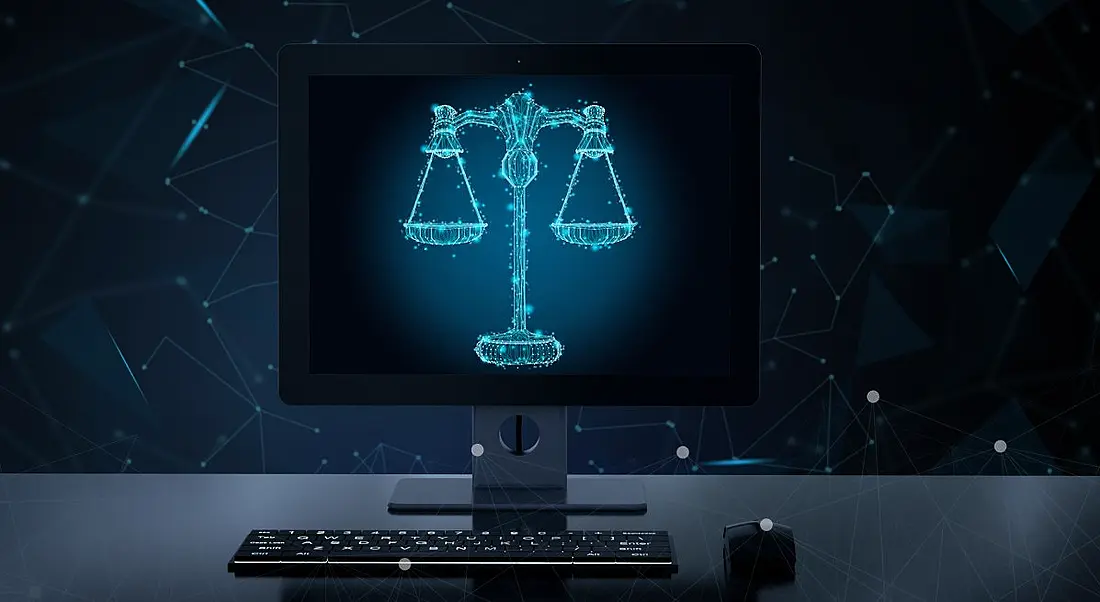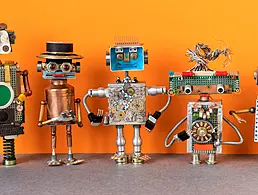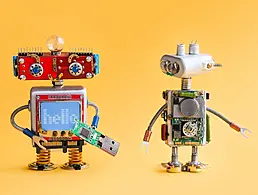William Fry’s focus on AI in the workplace discovers the potential for artificial intelligence to help solve some of Ireland’s current employment law issues.
Artificial intelligence or AI is defined by the Oxford English Dictionary as “the theory and development of computer systems able to perform tasks normally requiring human intelligence, such as visual perceptions, speech recognition, decision-making, and translation between languages”. The term is defined in popular culture, and in the eyes of employees the world over as an ever-approaching threat. The World Economic Forum has discussed AI as a major element of the fourth industrial revolution (4IR) and something that will rapidly change our world and workplaces.
Regardless of the definition, AI is coming into our workplaces and coming quickly.
As with any change to workplaces, employment law will follow. Employment lawyers and the Irish legislature need to consider how current employment law in Ireland may need to adapt to harness the full potential of AI for Irish businesses and, also, to protect employees.
William Fry investigated these issues in a series of articles, exploring how modern Irish workforces will be changed by AI and analysing the employment law issues connected with these changes.
AI and recruitment
AI has already changed the recruitment process, making it more effective. Such change will most likely increase rapidly. As this continues to develop, and perhaps reach the stage where the first stages in a recruitment process have little human interaction, it will be crucially important to ensure that Irish employment equality legislation is still respected. This includes programming the technology early on to respect the nine equality grounds and fixing any latent bias in technology.
Of course, AI might also help employers to be more diverse in their recruitment process allowing candidates who fit criteria but who failed to reach interview stage because of a previous latent bias to overcome those hurdles.
In our AI in the Workplace series, we discussed how AI can be used to improve equality and diversity in the recruitment process. AI platforms such as Textio, Headstart and Paññã are being used by employers to help meet their recruitment equality obligations. These platforms also provide fairness to candidates in the recruitment process. However, we also discussed the importance of testing and proper programming of AI in the recruitment process to avoid a latent bias in platforms, which could compound issues for employers and employees rather than help.
AI and gender equality
The gender pay gap – and gender equality more generally – can stand to improve from the rise of robots too. This can come through recruitment, as discussed above, to bonuses, benefits and even pay being tracked by technology to actual output by employees.
This has the potential to defeat any latent bias in an organisation and can stand to also defeat the sort of issues identified as a result of the first deadline of UK gender pay gap reporting. William Fry identified in a 2018 article that the Irish legislature and Irish employers need to learn from the lessons of the UK before final gender pay gap reporting legislation is adopted here. Making use of technology to accurately track pay in companies and then accurately report it would provide better and more real data, and help companies identify problems in their companies and seek to fix those problems more effectively.
We tackled the issue of gender inequality in the workplace in our series. We discussed the potential use of AI to help improve the quality of upcoming Irish gender pay gap reporting, both with data collection and data reporting. Again, following on from our recruitment article, we explored how AI platforms such as Textio can be used by employers to create fairer matrices and comparisons between all employees. We also discussed the innovative ways that employers are beginning to use AI to help create more flexible workplaces and so maintain engagement from employees with family commitments.
AI and accessibility
The use of technology in harmony with human work can open new doors to helping employees with disabilities remain in or return to the workforce more easily than before. This would also help employers to honour their legislative responsibilities more easily than before and perhaps assist with reasonably accommodating more cost-effectively.
Existing legislation could be reviewed to allow for greater connection between employees and technology including perhaps the need for employers to offer education as part of accommodation following serious illness or accident.
We further explored the use of AI in creating more flexible workplaces and maintaining engagement in our article focusing on disability and accessibility in the workplace. In response to an employer’s reasonable accommodation requirements under section 16(3) of the Employment Equality Acts 1998–2015, we discussed how AI platforms such as Microsoft’s Seeing AI app and IntelliGaze, and devices such as the Amazon Echo and Google Home can help employers meet these obligations and help employees with disabilities continue working and maintain engagement.
AI and inter-generational working
There has been much discussion recently on the future relationship between the various generations in Irish workplaces. Flexibility in the workplace has become a critical issue for younger generations, while legislation has adapted to enable Irish workers to remain in the workplace longer with a corresponding need for employers to respect active ageing. We will soon have a generation of employees who have grown up forever connected to technology.
All of this poses challenges for employers practically and for the legislature in providing legislation to enable all these generations to work in harmony. AI, implemented correctly, has the potential to help Irish employers solve these issues and allow a greater harmony between generations working together.
When we looked at how AI can help different generations work together, we focused on employers implementing flexible working and collaborative workspaces using platforms such as Microsoft Yammer and Google Hangouts.
AI and employment in Ireland
In our AI in the Workplace series, we explored and discussed the positive ways in which AI can be used to help solve some workplace problems. One theme that emerged above others is that of equality in the workplace and the idea that AI can be positively used to help improve equality and diversity in Irish workplaces. We are also aware that the progressing use of AI in the workplace is a concern for many employees and employers alike.
A key point of discussion is how disruptive technology will become in the workplace and whether it will eventually replace humans as employees or create more jobs. Employers are also concerned about rising costs of the implementation of technology.
The adoption of AI and associated technologies will carry financial and social costs in the early years, but studies such as ‘The economic impact of artificial intelligence on Ireland’s economy’, published by PwC in November 2017 indicate that over time, AI will have a neutral if not positive impact on jobs in Ireland.
However, in the first years as companies adapt to the changing landscape, certain roles may become redundant as they are replaced in the most part by technology. The challenge for the Irish legislature and employers here is to prepare for this change in advance and perhaps redefine the current understanding of alternative roles by offering employees at risk of redundancy upskilling programmes to retrain for newly created roles.
Irish workplaces have changed rapidly in recent decades. With people working longer and the use of technology, the ‘traditional’ Irish workplace no longer exists. However, ‘traditional’ problems still exist in Irish workplaces and many of these came to the fore in 2018, such as gender inequality.
On 10 April 2018, Ireland, along with 24 other EU member states, signed the EU Declaration on Cooperation on Artificial Intelligence. This was an important step for Ireland and the EU, but it is important that Ireland follows up on this declaration with a national strategy, too.
In our AI in the Workplace series, we joined other commentators calling for an Irish national AI strategy, which would deal with AI and its impact on society and which would also study the impact of AI on the labour market and suggest changes to legislation where necessary.
By Catherine O’Flynn and Darran Brennan
Catherine O’Flynn is a partner at William Fry and head of the firm’s Employment & Benefits department, in which Darran Brennan is a solicitor.
This article has been compiled from two separate articles, which were originally published on the William Fry blog.




